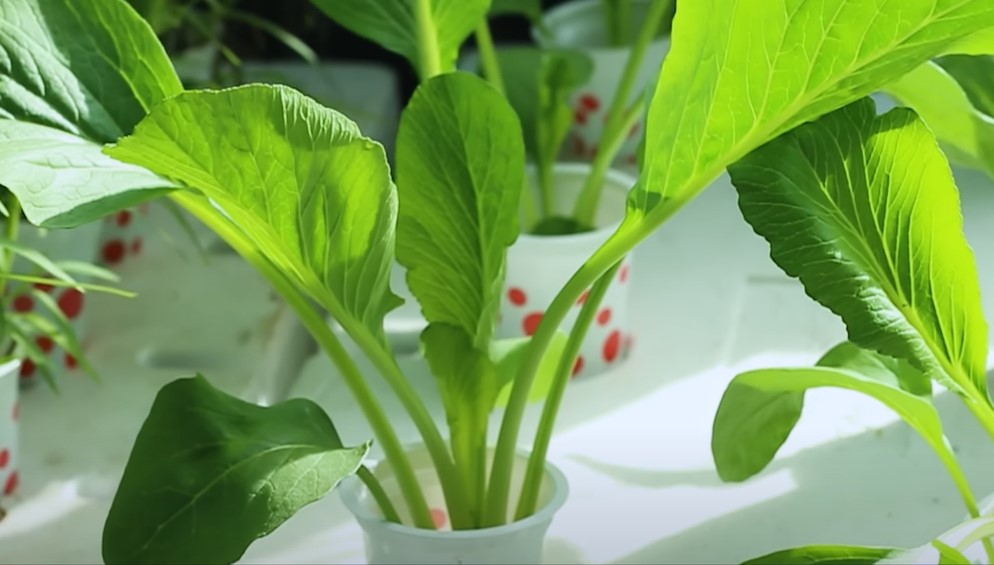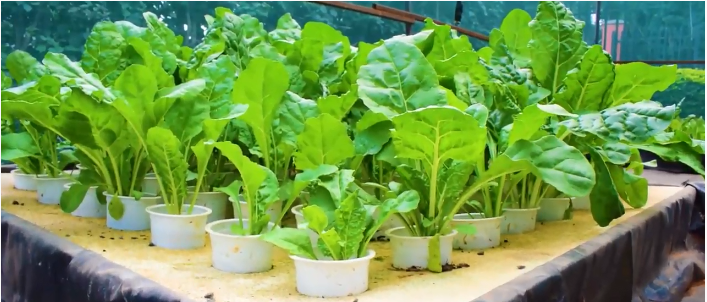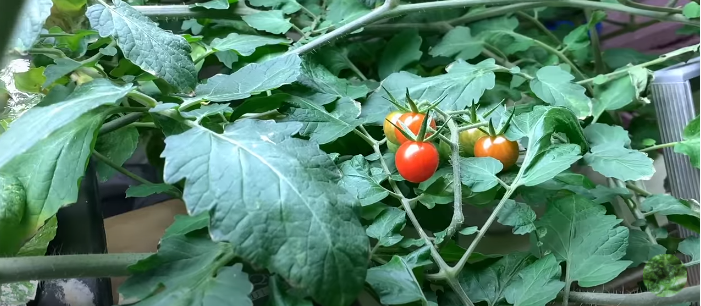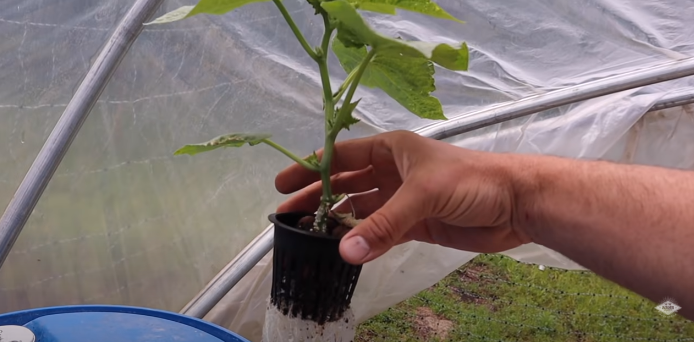Everyone wishes to live a healthy life by consuming fresh vegetables every day from their own farm. If you want to have your own but you don’t have a dedicated outdoor garden space in your home, then hydroponic is the answer. By growing hydroponic vegetables indoor, you can solve your lack of space issue.
Growing your own hydroponic vegetables means you know what you are eating and what has been used to cultivate that plant. Moreover, you will get your food for free whenever you want. Get the benefit of the future farming and learn how to grow vegetables hydroponically.
What is hydroponic?

To make it simple, Hydroponics is a form of gardening that skip the soil. Hydroponics is sub in a different material to support the roots of the plant and grow crops directly in solution of water and nutrients. Throughout the process, you need to control several factors, such as temperature, lighting, water quality, pH level, and air circulation.
In a hydroponic system, farmer is the ruler. They can control the nutrients to optimize the plants growth. Growing plants indoors allows them to control lighting and temperatures schedule. Vertical farming design saves the space and increases planting density.
The growing medium such as gravel, expanded clay, peat, rockwool, and vermiculite perlite are the substitutes of the soil. Instead of the plant search through the soil for the essential minerals, they take them directly from the water. No weeds mean no competition for nutrients and space.
Hydroponics plants will be fast-growing compared to plants grow in soil and produce more yields if you can maintain ideal environmental conditions. It needs less space and possible for locations where soil condition is too poor to support farming. It conserves soil with no use of pesticides and reduces water wastage.
With the right setup and nutrients balance, you can grow anything from hydroponics vegetables, flowers, fruits, and herbs, but several plants are best suited for this method. For the beginners, it is better to pick the low maintenance and quick growing plants because the failure percentage is small.
When you already know what plants you want to cultivate, decide to go with seed or seedling. If you add seed to your hydroponic system, the plant won’t get root damage from being transplanted into your system. It is also more cost-effective than buying seedling, as you can save some for the next round. Seedling may carry diseases or bugs from the store.
What are the Types of Hydroponic System?

In selecting the right hydroponic system, you must consider some factors: space availability, available finance, types of crop to be grown, lighting, time availability, and future expansion. There are two hydroponic system categories, Solution / Liquid Culture, and Medium / Aggregate Culture.
Some types of Solution Culture are Aeroponics and Nutrient Film Technique. The plants grow directly in the nutrient-enriched solution. It works best with fast growing, shallow-rooted plants such as spinach, lettuce, and herbs.
Medium Culture such as Wick System or Ebb, Drip System, and Flow System, uses the growing medium to support heavy plants. You can adapt it for deep roots hydroponic vegetables such as beets, comfrey, and chicory, or the most top-heavy one which need support such as beans, cucumbers, squash, and tomatoes.
The most widely used type of hydroponics systems is drip system. In this system, the nutrient solution drip onto the root of each plant via a small drip line. It needs time controller to ensure the plants get enough nutrient solution.
Related: How to Control the PH Level in hydroponics, Effective ways, How to keep ph stable in hydroponics
3.What Vegetables Grow Hydroponically?

Almost any vegetables flourish well in any hydroponic system. Hydroponic vegetables that will never fail to grow are :
- beets
- asparagus
- artichokes
- broccoli
- cauliflower
- peas
- lettuce
- cabbage
- beans
- spinach
Root vegetables that grow under the soil such as parsnips, potatoes, leeks, carrots, radishes, yams, and onions require extra care.
Tall and vining vegetables like zucchini, summer squash, and corn are not space efficient and require much more efforts. They will dominate your whole unit when fully grown. To grow hydroponic vegetables, you must consider the space you have. If you have not enough space, the best and easiest vegetables are leafy greens and herbs.
4. Are Hydroponic Vegetables Healthy?

In general, the nutritional value of hydroponic vegetables is about the same as those grown in the soil depends on the nutrient solution you are putting. They are safe to consume because no harmful pesticides. The taste also is as good as conventional soil vegetables because all the essential nutrients readily available to the plants.
Although hydroponics plants use no pesticides, it still need fertilizer. You should not use regular fertilizer for hydroponics. It lacks many compounds that hydroponic nutrients contain, and they can cause problems at different stages of growth. It is better to use liquid fertilizer that contain major plant nutrients (nitrogen, phosphorous and potassium), micro-nutrients and minerals for quality hydroponic vegetables.
One health issue of hydroponic vegetables is they are susceptible to salmonella contamination due to the high humidity of hydroponic greenhouses. But, by washing them thoroughly and cooking them at right temperature before eating can destroy any of the bacteria.
5. How long does it take to grow hydroponic vegetables ?

The amount of time for hydroponic vegetables to be fully grown is different depending on many factors, such as the specific type of vegetables and the growing conditions. Although the vegetables will grow faster under optimum conditions, you need to be patience waiting for a seed to grow naturally into a plant.
Hydroponic system offers you a year-round growing. You can grow, harvest, and eat hydroponic vegetables beyond the normal growing season. In an experiment, farmers can achieve growing times which are around 20%-30% lesser than traditional one.
The life cycle tomato, for example, take 5-10 days to germinate, 4-6 weeks to reach transplanting size (about 8 inches), and 1-2 months to start setting fruit. Carrot will reach maturity in about 70 days. Radishes germinate quickly in 2 or 3 days.
6. Can You Grow Root Vegetables in Hydroponics?

You can grow root vegetables like onion, turnip, beet, radish, carrot, potato, and beet hydroponically, but with a little more effort. The most suitable hydroponic method for them is ebb and flow system that uses enough growing media to support the hydroponic vegetables from start to finish.
The root, which is actually the edible part of the plant, gives you the option to harvest them as baby-sized veggies or to let them continue growing to optimum sizes. You won’t need a very deep hydroponic system for baby-sized vegetables, and a larger, deeper growing bed for the big ones.
7. What are Important Tips to Grow Hydroponic Vegetables Indoor?
You need to consider these factors when you want to grow your own hydroponic vegetables.

You can actually get a natural sunlight by situating your plants near a window or figure out some other ways to give them much needed light preferably at least 6 hours a day. But that can be complicated enough that you better use hydroponic grow light to fulfill the light requirements to plants.When purchasing a hydroponic grow light, you need to consider your enclosure type and size, plant type, budget, and available ventilation facilities in your place. Small scale farmers are better to start indoor gardening with the compact fluorescent bulbs.
1. pH Level

It is significant to set the optimum pH level of your nutrient solution. In a hydroponic system, you must keep the consensus pH level between 5.5-6.5 throughout the cycle. Not having the optimum pH level reduces the plants’ ability to absorb minerals, vitamins, carbohydrates, and other nutrients. It is better for you to have a necessary equipment like pH pens.
2. Temperature

It is important to monitor the warm or cold it gets around your hydroponic vegetables garden environment. You need to protect it from the heat generated by your grow lamps or a nearby radiator, or from falling temperature in the winter. The ideal hydroponic room temperature range is between 18-20oC for optimal plant growth. Insects can evolve mush faster when the temperature surpasses 26oC.
3. Growth medium

Growth medium is important in hydroponic system because it is the constituent of soil as a support system for developing roots and providing anchorage. It provides the roots with oxygen dissolved water, brings the water and dissolved nutrients.
There are many types of growth medium depending on the type of crop and hydroponic system you use, such as expanded clay pellets for drip system, coco coir for passive hydroponics, rockwool for flood and drain systems, perlite / vermiculite for NFT and drip system.
4. Spacing

Proper spacing hydroponic plants boost the nutrient intake and increase the yields. It also eases you to harvest. Moreover, given the right spacing between each plant, you can manage if one of the plants get disease as it wont easily spread to the others.
The general rule for spacing hydroponic plants is a minimum of 18 inches apart and a maximum of 30 inches for less than three feet tall plants. If you go more than this space, you will end up with smaller yields.
Conclusion
People nowadays are enjoying the happiness of growing their own food as it also improving productivity. The movement towards a healthier lifestyle provides an unmeasured opportunity for hydroponics and organic gardening. Having the hydroponic vegetables in your indoor space gives you a free time to consume fresh food for free.
Not only individuals, but restaurants and even grocery stores have implemented their own hydroponic vegetables to offer fresh, local product to their customers. Beside the demands of uncontaminated foods, they also seek for higher profit that the hydroponic vegetables offer.